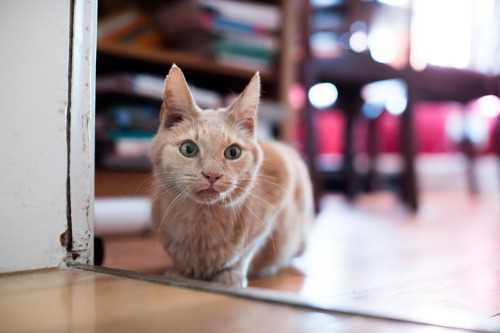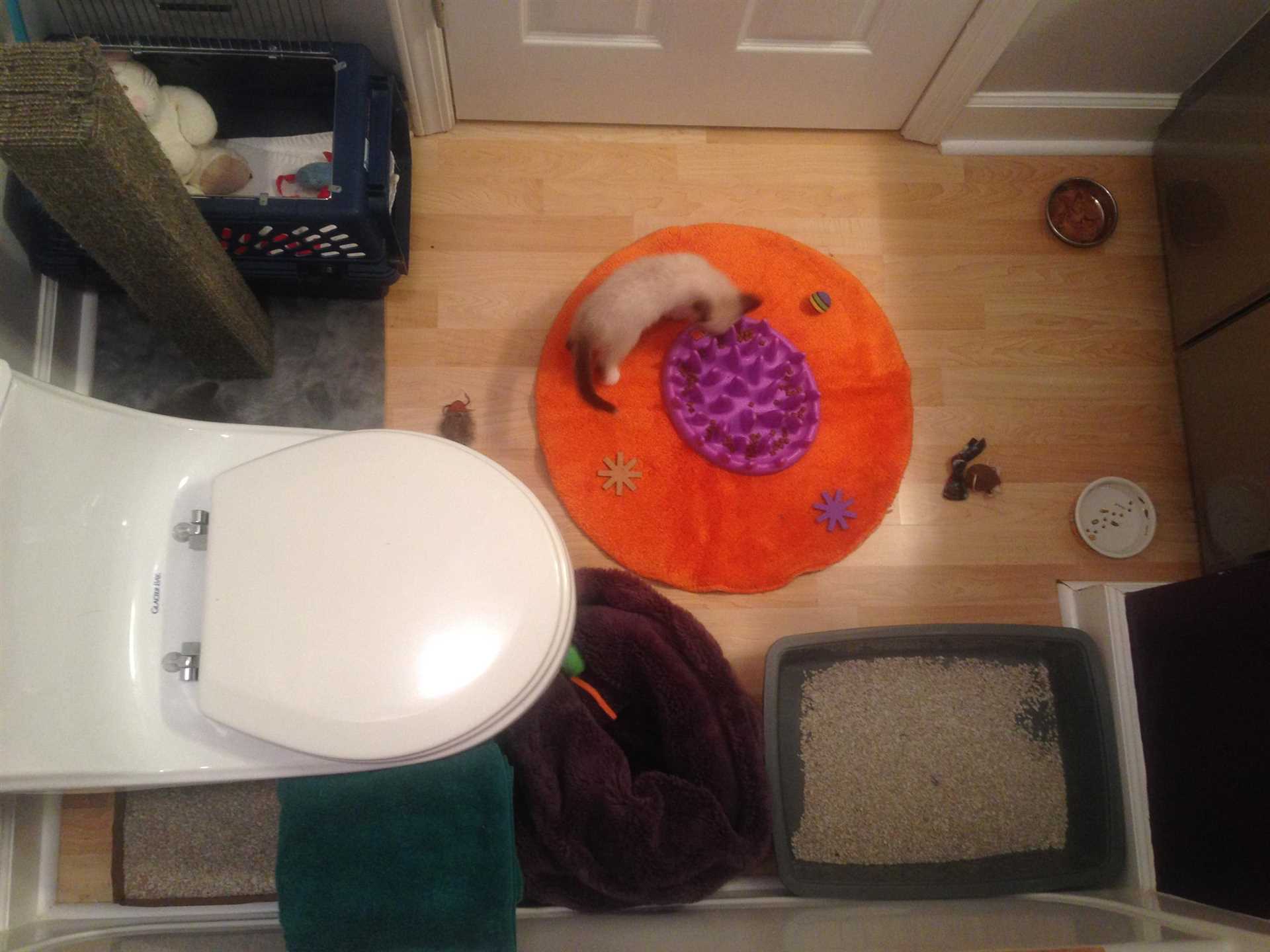



As a rule of paw, it’s best to allow a feline companion to remain in a designated space for a minimum of 3 to 7 days. This period helps in acclimatizing to the new environment, ensuring that they feel secure and comfortable.
During this time, provide essential resources: a cozy bed, food, fresh water, and a litter box. Engage in gentle play and interaction to build trust. It’s crucial to monitor their behavior and reactions; signs of stress or fear might indicate the need for additional time within the confines of that safe area.
After the initial adjustment phase, gradually introduce them to other areas of the home. Allow access to one new section at a time, observing their comfort level. Remember, patience is key in this transition process.
Duration for Initial Confinement
Three to seven days is a practical timeframe for limiting a feline’s space during the adjustment phase. This period allows the little one to acclimate to their surroundings without feeling overwhelmed.
Signs of Comfort
Monitor their behavior for signs of relaxation:
- Exploring the area confidently.
- Using the litter box without hesitation.
- Eating and drinking regularly.
- Engaging in play or showing curiosity about toys.
Gradual Expansion
Once signs of comfort are evident, begin introducing them to other parts of the living space gradually. Start with one additional area and observe their reactions. If they seem stressed, revert to the original space for a little longer.
Ultimately, patience is key. Every feline is unique, and respecting their pace ensures a smoother transition into their new home.
Understanding the Adjustment Period for Cats

Allow approximately two weeks for a feline to acclimate to a new environment. This timeframe varies depending on the individual’s personality and past experiences. Observe behavior closely during this phase; signs of distress may indicate a need for more time.
Creating a Safe Space
A designated area should be equipped with necessities: litter box, food, water, and a cozy resting spot. Familiar scents, such as blankets or toys from their previous home, can aid in comfort. Minimize loud noises and sudden movements to reduce anxiety.
Monitoring Behavior
Watch for signs of comfort, like exploring the surroundings or initiating play. If hiding persists beyond the initial adjustment period, additional patience may be required. Gradual introduction to other areas of the house can help ease the transition. Positive reinforcement, such as treats and gentle interactions, fosters trust and encourages exploration.
Signs That Your Cat is Ready to Explore
Look for these indicators to know it’s time for your furry friend to venture beyond their initial safe space:
- Curiosity: If your companion starts sniffing around the door or peeking out with interest, they may be eager to explore.
- Playfulness: Increased energy and playfulness can signal that they are feeling comfortable and ready for new adventures.
- Relaxed Body Language: A calm demeanor, such as lying down in a relaxed position or rolling over, indicates confidence.
- Vocalization: If your feline begins to meow or chirp at the door, they might be expressing their desire to explore their surroundings.
- Exploration of the Space: When they start moving around their designated area, inspecting furniture or toys, it’s a sign they are getting comfortable.
Keep in mind to supervise their exploration. Gradual introductions to the rest of your home can help maintain their sense of security. If you want to support their well-being during this phase, consider the best food for feral cats in winter to ensure they stay nourished. Additionally, providing a safe space with access to toys is crucial as they adjust.
As they explore, observe their behavior closely. Each cat is unique, and understanding their individual needs will help create a harmonious environment. If they seem overwhelmed, don’t hesitate to give them more time to acclimate.
For a fun twist, while you’re ensuring comfort in your home, why not check out the best pressure washer bundle for cars? Keeping your space clean can also contribute to a more inviting atmosphere for your beloved pet!
Creating a Comfortable Space in One Room
Ensure a designated area includes cozy bedding, a litter box, and fresh water. A soft blanket or a plush bed gives a sense of security and comfort. Position the litter box in a quiet corner, away from food and water, to promote hygiene and ease of use. Fresh water should always be accessible, preferably in a shallow bowl to avoid spills.
Incorporate engaging toys to stimulate play and exploration. A mix of interactive and solo toys can keep boredom at bay. Consider a scratching post or pad to satisfy natural instincts and maintain claw health. Position these items in a way that encourages movement and activity.
Provide vertical space with shelves or cat trees, allowing exploration and a sense of ownership of the environment. Cats feel safer when they can observe from a height, so create spots where I can perch and survey my surroundings.
Dim lighting can help create a calm atmosphere. Use curtains or shades to control brightness and allow for cozy napping spots. Additionally, consider incorporating pheromone diffusers to ease stress and promote relaxation.
Establish a consistent routine for feeding and interaction. Predictability helps in building trust and comfort. Regular playtime and gentle petting sessions strengthen the bond and create a safe space for me to thrive.
Isolation Duration for a New Feline Companion
The isolation period for a recently adopted feline usually spans from a few days to two weeks, depending on the individual personality and history of the animal. This timeframe allows for acclimatization to the new environment while minimizing stress.
Factors Influencing Isolation Time
Several elements can affect how long your new furry friend should remain separated:
| Factor | Impact on Duration |
|---|---|
| Age | Young kittens may adjust faster, while older cats may require more time. |
| Previous Environment | Cats from stable homes may adapt quickly compared to those from shelters. |
| Temperament | Shy or anxious personalities often need longer to feel secure. |
Monitoring Progress

During this period, observe behaviors such as eating, playing, and interacting with humans. Gradual exposure to other pets can begin once signs of comfort become evident. This structured approach promotes a smoother transition and fosters positive relationships among your furry household members.
Gradually Introducing Your Feline Friend to the Rest of the House
To smoothly transition your furry companion into a larger environment, begin by allowing short, supervised excursions beyond their initial space. Start with a few minutes each day, observing their comfort level. If they seem at ease, gradually extend these sessions.
Identify areas of the home that are quiet and secure. Avoid overwhelming them with too much space at once; introduce one room at a time. Use treats and toys to create positive associations with each new area. This will help them build confidence as they explore unfamiliar surroundings.
Monitoring Behavior During Exploration
Watch for signs of stress, such as hiding or excessive vocalization. If your companion shows discomfort, retreat to the previous space and allow more time before trying again. Patience is key; rushing this process can lead to anxiety.
Establishing Safe Zones
Provide cozy spots with familiar scents throughout your home. This could be a blanket or a favorite toy. Creating these safe zones allows your pet to retreat whenever they feel overwhelmed, ensuring a more secure exploration experience.
Monitoring Your Cat’s Behavior During Isolation
Pay close attention to your feline’s actions and reactions while confined to a designated area. Frequent observations are essential to gauge their comfort level and emotional state. Look for signs such as hiding, excessive vocalization, or pacing, which may indicate stress or anxiety.
Behavioral Indicators
Normal eating and drinking habits signal a sense of security. If your companion is engaging in play or showing curiosity about their surroundings, it’s a positive indication that they are adapting well. Conversely, if your friend is excessively grooming or displaying aggressive behavior, consider extending the isolation period to help them acclimate.
Interaction and Engagement
Engage with your companion through gentle play or treats to build trust. Observe how they respond to your presence; a relaxed cat will approach or purr. If they retreat or hiss, it may be best to give them more time alone. Always ensure they have access to essential resources such as food, water, and a litter box while monitoring their comfort level.
When to Consult a Veterinarian About Your Cat’s Stress
If my behavior changes significantly, it’s time to visit the vet. Signs like excessive hiding, aggression, or refusal to eat are red flags. If I stop using my litter box or seem overly vocal, that’s another indicator. Stress can lead to health issues, so acting quickly is key.
Pay attention to any physical symptoms as well. If my fur looks unkempt, or if I start grooming excessively, these might signal underlying problems. Weight loss or gain can also indicate stress. Regular check-ups help ensure that I’m healthy and that my emotional well-being is taken seriously.
If my human notices any of these behaviors persisting for more than a few days, it’s wise to consult a veterinarian. They can offer advice specific to my situation and check for any possible medical conditions exacerbating my stress.
Lastly, if there are sudden changes in the household, like new pets or moving to a different home, my response might require professional insight. Understanding my reactions helps everyone involved create a better environment for me.










